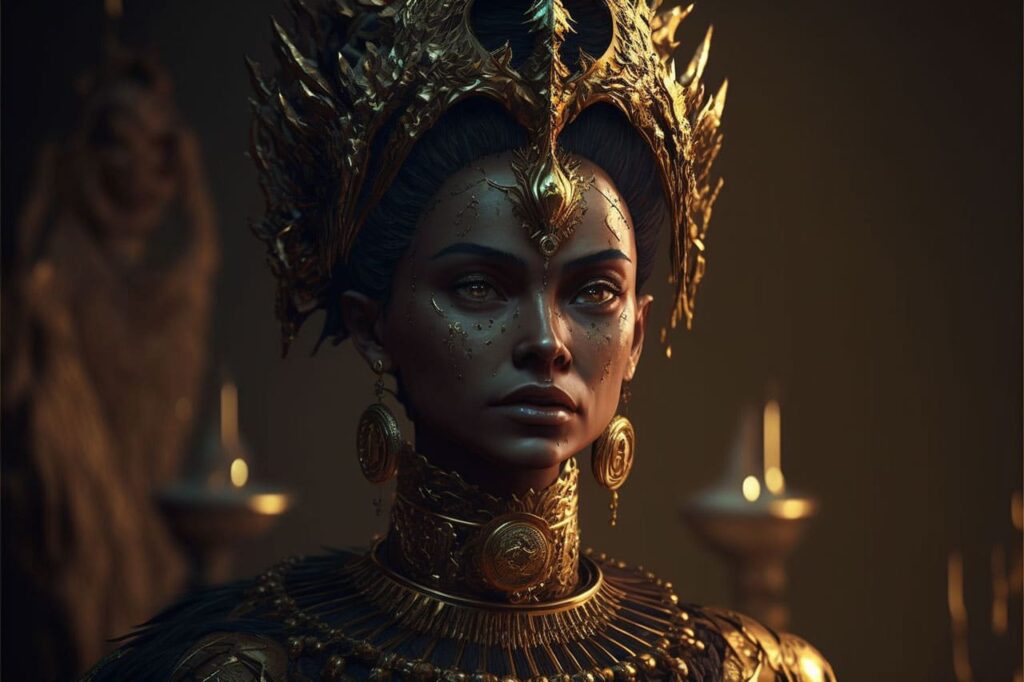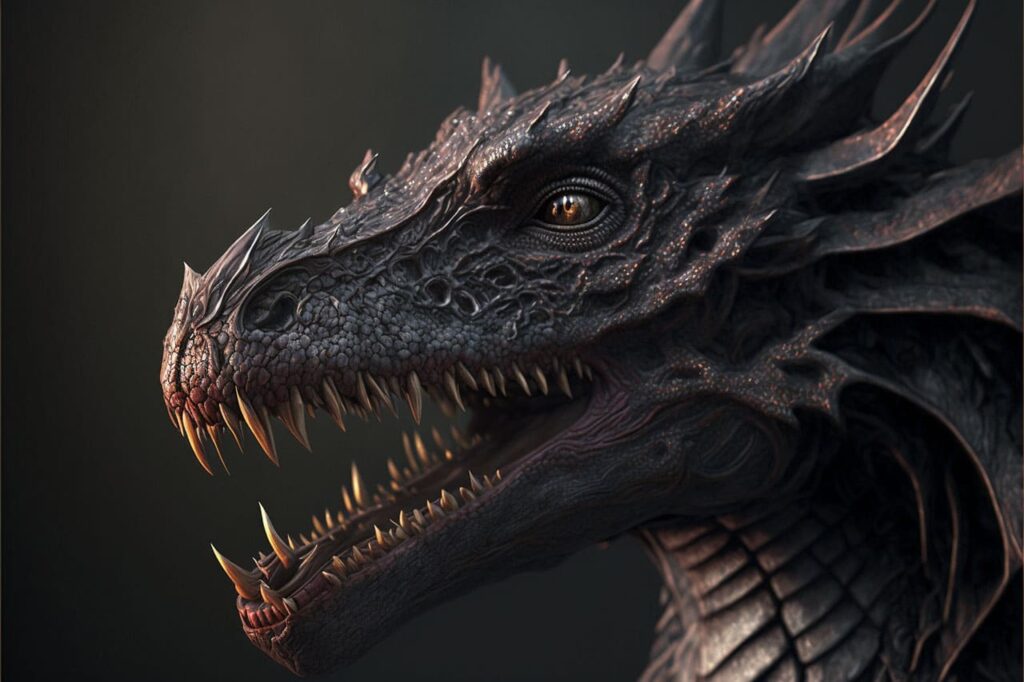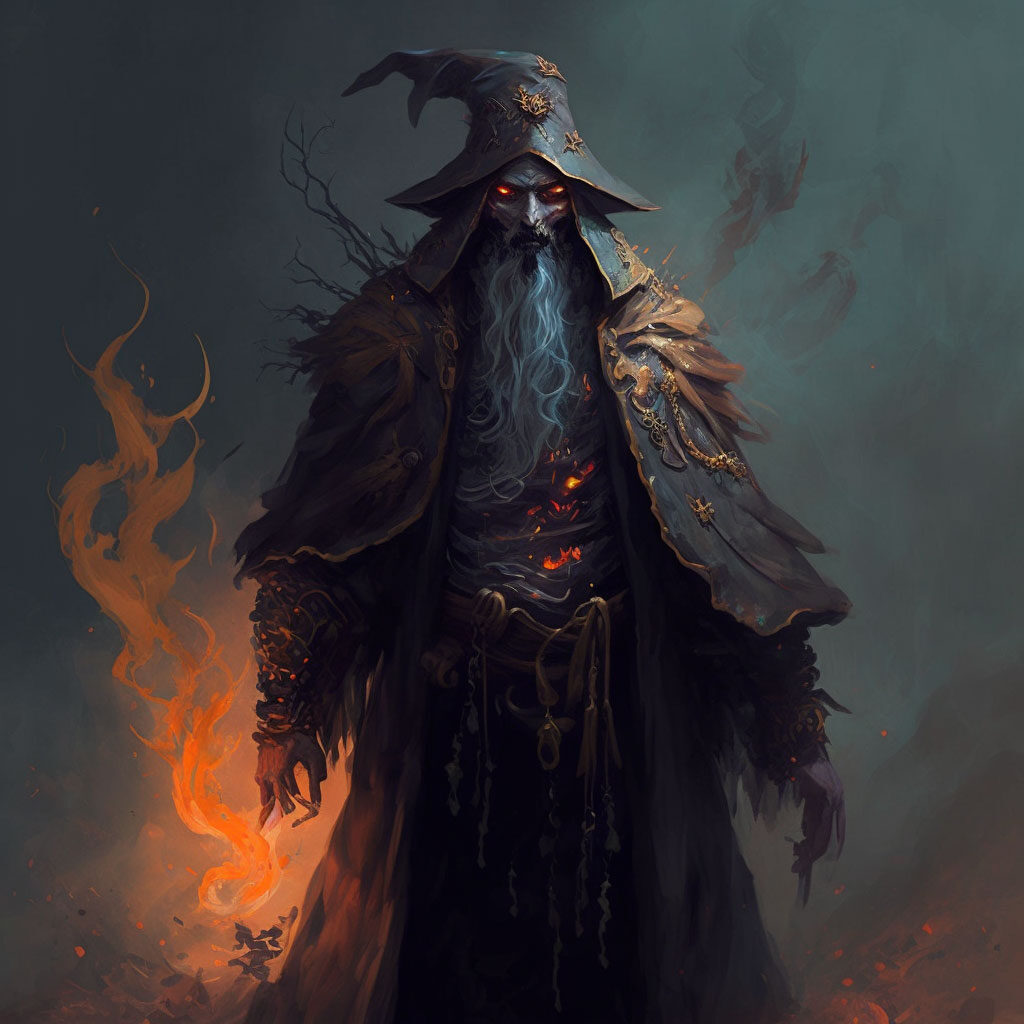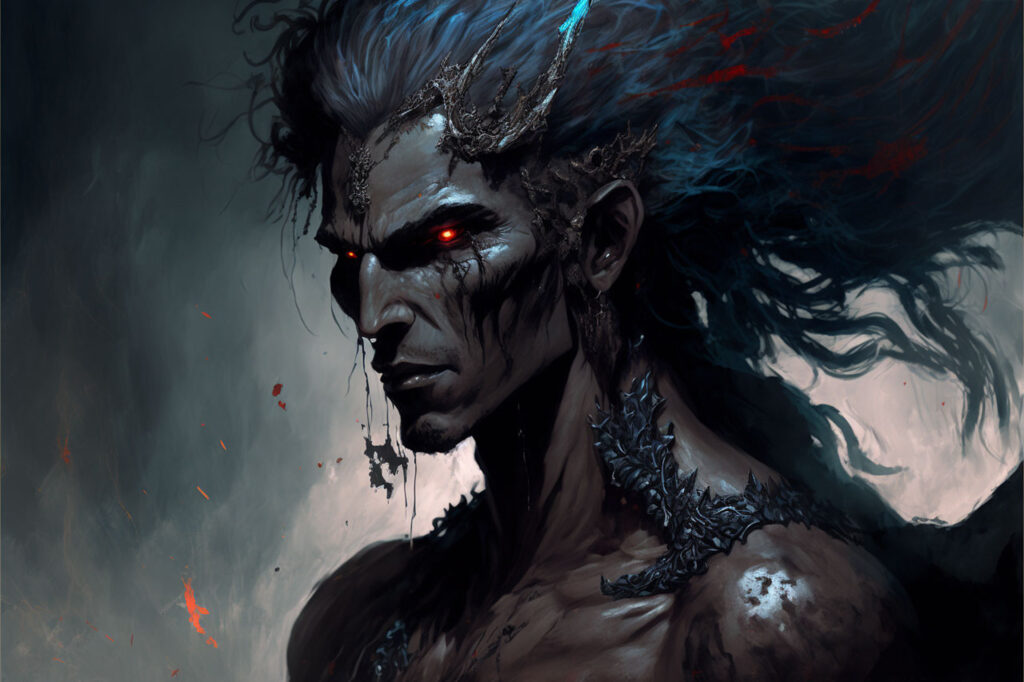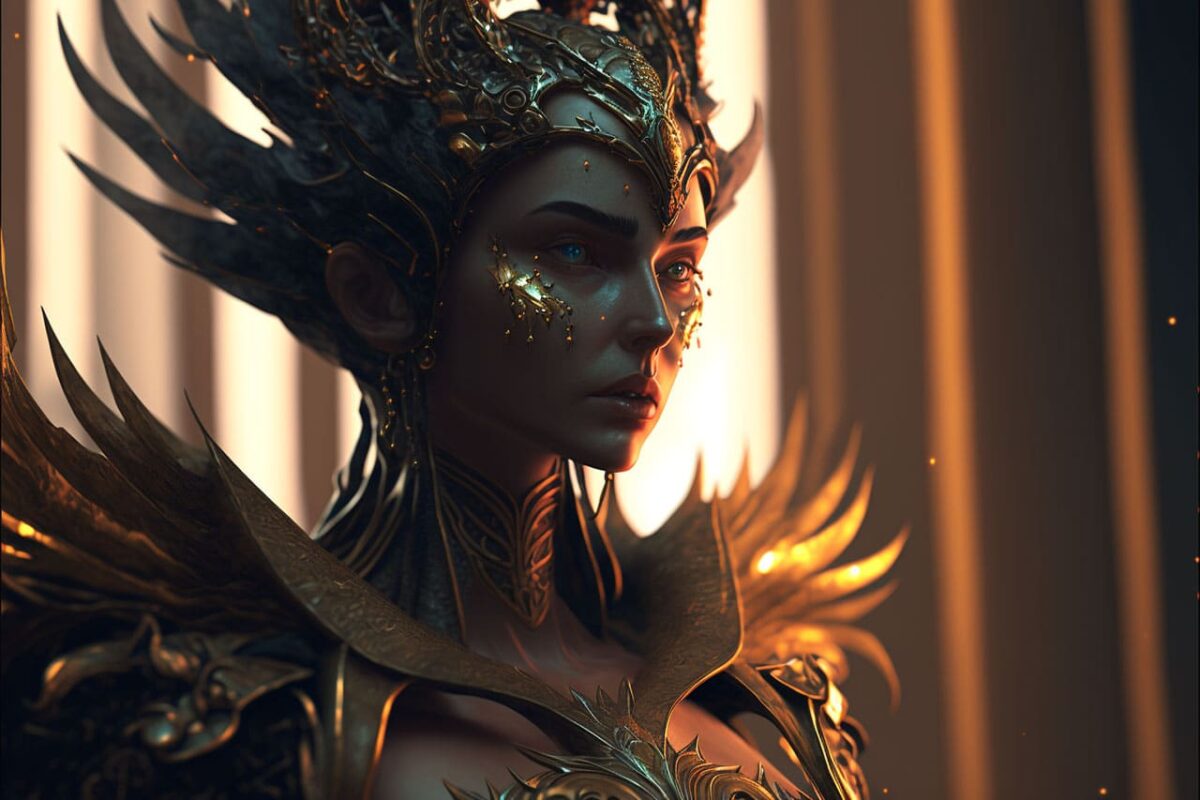Dark exotic art is a style of artwork that is characterized by its dark, moody, and often surreal or otherworldly themes. It often incorporates elements of fantasy, horror, and the occult, and is often inspired by folklore, myth, and ancient cultures.
One of the key features of dark exotic art is its use of bold and vibrant colors, which are used to create a sense of mystery and intrigue. The art often features dark, rich hues such as deep reds, purples, and blues, which are used to create a sense of depth and atmosphere.
In terms of subject matter, dark exotic art often depicts strange, otherworldly creatures and beings, such as dragons, demons, and mythical monsters. It may also feature human figures, often portrayed as mysterious or eerie, and often set against surreal or otherworldly landscapes.
Dark exotic art can be found in a variety of mediums, including painting, drawing, sculpture, and digital art. It has a rich history, with roots in ancient cultures and mythology, as well as in more modern art movements such as the Gothic and Surrealist movements.
One of the key figures in the world of dark exotic art is H.R. Giger, the Swiss artist best known for his work on the Alien film franchise. Giger’s art is known for its dark, surreal, and often unsettling themes, and has had a major influence on the genre of dark exotic art.
Other notable artists in the world of dark exotic art include Brom, a fantasy artist known for his dark and moody paintings, and Zdzisław Beksiński, a Polish artist known for his disturbing and surreal paintings and sculptures.
Dark exotic art is a fascinating and unique style of artwork that is loved by many for its mysterious and otherworldly themes. It is a testament to the human imagination and the boundless potential of art to transport us to strange and wonderful worlds.
What is the history of dark exotic art?
The history of dark exotic art can be traced back to ancient cultures and mythology, which often featured strange and otherworldly creatures and beings in their stories and art. In more recent history, the Gothic movement of the 18th and 19th centuries was a major influence on dark exotic art, with its focus on dark and mysterious themes.
The Surrealist movement of the early 20th century was also a major influence on dark exotic art, with its emphasis on the unconscious mind and irrational imagery. The work of artists such as Salvador Dali and Max Ernst had a profound impact on the development of dark exotic art.
In the modern era, dark exotic art has continued to evolve and take on new forms, with artists drawing inspiration from a wide range of sources, including folklore, myth, horror, and the occult. Today, dark exotic art can be found in a variety of mediums, including painting, drawing, sculpture, and digital art, and is enjoyed by a global audience.
What are some common themes in dark exotic art?
Some common themes in dark exotic art include:
- Fantasy: Dark exotic art often incorporates elements of fantasy, depicting mythical creatures and otherworldly landscapes.
- Horror: The art often has a dark and eerie quality, drawing on themes of horror and the supernatural.
- The occult: Dark exotic art may feature elements of the occult, such as demonology and magic.
- Mythology: The art is often inspired by folklore and myth, depicting mythical creatures and characters.
- Ancient cultures: Dark exotic art may draw on ancient cultures and mythology, incorporating elements such as ancient gods and goddesses, and ancient symbols and motifs.
- Surrealism: The art often has a surreal quality, depicting strange and irrational scenes and imagery.
- The human figure: Dark exotic art may feature human figures, often portrayed in a mysterious or unsettling manner.
Overall, dark exotic art is characterized by its dark, moody, and often surreal or otherworldly themes, which are brought to life through the use of bold and vibrant colors and striking imagery.
Who are some notable artists in the world of dark exotic art?
Here are some notable artists in the world of dark exotic art:
H.R. Giger: Swiss artist H.R. Giger is best known for his work on the Alien film franchise, which featured his iconic creature designs. Giger’s art is known for its dark, surreal, and often unsettling themes, and has had a major influence on the genre of dark exotic art.
Brom: Brom is a fantasy artist known for his dark and moody paintings, which often feature strange and otherworldly creatures and landscapes.
Zdzisław Beksiński: Beksiński was a Polish artist known for his disturbing and surreal paintings and sculptures, which often featured strange and twisted human figures.
Kentaro Miura: Miura is a Japanese manga artist known for his dark and violent art, which often features demonic and otherworldly creatures.
Frank Frazetta: Frazetta was an American artist known for his fantasy and science fiction artwork, which featured muscular heroes and fearsome monsters.
Luis Royo: Royo is a Spanish artist known for his dark and sensual artwork, which often features strong, powerful women and otherworldly creatures.
Dave McKean: McKean is a British artist known for his surreal and disturbing artwork, which often features strange and unsettling creatures and landscapes.
These are just a few examples of the many talented artists working in the world of dark exotic art. There are many other artists who have contributed to the genre and continue to inspire and influence others with their unique and captivating artwork.
How is dark exotic art different from other styles of art?
Dark exotic art is often distinguished by its dark, moody, and otherworldly themes, as well as its use of bold and vibrant colors. It is often inspired by folklore, myth, and ancient cultures, and may incorporate elements of fantasy, horror, and the occult.
In contrast, other styles of art may focus on different themes and subjects, and may use different techniques and approaches. For example, traditional styles of art such as realism and classical art often strive to depict subjects in a realistic and lifelike manner, using techniques such as shading and perspective to create a sense of depth and dimension.
Abstract art, on the other hand, may focus on color, line, and form, rather than on depicting specific subjects or themes. Impressionist art, meanwhile, is characterized by its use of light and color to capture the fleeting impressions of the world around us.
There are many different styles of art, each with its own unique characteristics and techniques. Dark exotic art is just one of these styles, and is distinguished by its focus on dark, moody, and otherworldly themes.
What mediums is dark exotic art created in?
Dark exotic art can be created in a variety of mediums, including:
- Painting: Dark exotic art can be created using a variety of painting techniques, such as oil painting, acrylic painting, watercolor painting, and more.
- Drawing: Dark exotic art can be created using traditional drawing mediums such as pencil, pen and ink, charcoal, and more.
- Sculpture: Dark exotic art can also be created in three dimensions, using materials such as clay, stone, wood, and metal.
- Digital art: With the rise of technology, dark exotic art can now also be created using digital tools such as graphic design software and 3D modeling software.
The medium used to create dark exotic art is largely a matter of personal preference and style. Some artists may prefer traditional mediums such as painting and drawing, while others may enjoy the flexibility and versatility of digital art.
What is the appeal of dark exotic art?
Dark exotic art has a strong appeal for many people due to its mysterious and otherworldly themes. The art often features strange and surreal imagery, depicting otherworldly creatures and landscapes that capture the imagination and transport the viewer to strange and wonderful worlds.
The bold and vibrant colors used in dark exotic art also add to its appeal, creating a sense of mystery and intrigue. The art’s dark and moody themes can also be emotionally powerful and evocative, speaking to deeper themes and feelings within the viewer.
In addition, the history and traditions of dark exotic art add to its appeal, with its roots in ancient cultures and mythology, as well as in more modern art movements such as the Gothic and Surrealist movements.
Overall, the appeal of dark exotic art lies in its ability to capture the imagination and transport the viewer to otherworldly realms, as well as in its use of bold and vibrant colors and its emotional power.
How has dark exotic art evolved over time?
Dark exotic art has evolved over time, taking on new forms and incorporating new influences and techniques.
In ancient cultures, this kind of art often took the form of mythology and folklore, which featured strange and otherworldly creatures and beings. In more recent history, the Gothic movement of the 18th and 19th centuries was a major influence on dark exotic art, with its focus on dark and mysterious themes.
The Surrealist movement of the early 20th century was also a major influence on this style, with its emphasis on the unconscious mind and irrational imagery. The work of artists such as Salvador Dali and Max Ernst had a profound impact on the development of dark exotic art.
In the modern era, dark exotic art has continued to evolve and take on new forms, with artists drawing inspiration from a wide range of sources, including folklore, myth, horror, and the occult. Today, dark exotic art can be found in a variety of mediums, including painting, drawing, sculpture, and digital art, and is enjoyed by a global audience.
Overall, dark exotic art has evolved and changed over time, incorporating new influences and techniques, and adapting to new mediums and technologies. It continues to evolve and inspire new generations of artists and viewers.
What are some ways to get started in creating dark exotic art?
Here are some ways to get started in creating dark exotic art:
- Experiment with different mediums: Dark exotic art can be created using a variety of mediums, including painting, drawing, sculpture, and digital art. Experiment with different mediums to find the one that works best for you.
- Develop your own style: As you create dark exotic art, try to develop your own unique style and voice. This can be achieved by experimenting with different techniques and approaches, and by drawing inspiration from a variety of sources.
- Practice regularly: Like any skill, creating this type of art takes time and practice. Set aside time each day to work on your art, and try to create something new on a regular basis.
- Find inspiration: Look for inspiration in a variety of sources, including mythology, folklore, horror, and the occult. Experiment with different themes and subjects to see what resonates with you.
- Join a community: Consider joining a community of artists, either online or in person, to share your work and get feedback. This can be a great way to learn from others and to get inspired by their art.
The key to creating successful dark exotic art is to practice regularly, develop your own style, and find inspiration from a variety of sources. With time and dedication, you can develop your skills and create truly unique and captivating dark exotic art.
Some examples of Dark Exotic Art
